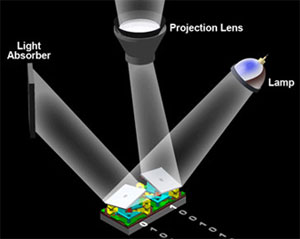Introductory dissertation
I recently started drafting my new challenge, to develop affordable augmented reality glasses. Obviously, the first step was to dig a bit on the internet to see what DIY projects do already exist. After some findings, I can conclude that there is not any project that enthusiast me. Most of them are based on the reflection of a screen in a semi-transparent/semi-reflective glass.
- https://www.zuehlke.com/en/insights/self-made-ar-glasses-testing-project-north-star
- https://www.open-electronics.org/make-your-diy-smart-glasses-running-on-arduino/
- https://blog.arduino.cc/2021/08/27/giving-google-glass-a-run-for-its-money/
- https://hackaday.com/2021/08/14/3d-printed-smart-glasses-put-linux-in-your-face/
- https://www.youtube.com/watch?v=IpJqzwXWg-k
- https://skarredghost.com/2021/01/09/triton-project-diy-ar/
- https://www.youtube.com/watch?v=Dy_6et-XdsY
- https://www.roadtovr.com/dell-partners-meta-sell-meta-2-ar-dev-kit-february/
- https://www.hackster.io/news/view-images-on-this-diy-augmented-reality-headset-f69e2b214ee0
- https://hackaday.io/project/160615-emotiglass
What I see from these projects is that the image is barely a ghostly vision in front of you. So I decided to start a deeper research about the existing technology for augmented reality glasses (not only the DIY projects).
Image sources
Concerning image generation technologies, there are two main competitors in the contest. LCD and DLP. The well-known Liquid-Crystal Display or LCD is the most popular selection.
I won’t get into details, but roughly, LCD works by having a back-source of light which passes though a set of filters.
Digital Light Processing (DLP) is a set of chipsets based on optical micro-electro-mechanical technology that uses a digital micromirror device (or DMD). This technology has been developed by Texas Instruments, which currently exploits it with a set of products. DLP chips have an array of micromirrors that can be moved to reflect or not a source of light. This, in combination with color filters, can produce images. There is a great video by TI explaining how it works https://www.youtube.com/watch?v=h4JMgceNgKUDLP

Both technologies gave odds and evens… From my perspective, the problem that DIY AR glasses projects have is that their images are poor and not very immersive. I think that it is because the strength of the light produced by typical Arduino and RPY screens is not too high. Additionally, if you want a higher resolution, will need more DPI or a larger screen, and that does not always scale very well (moreover, taking into account that we want a small device for our glasses).
So… Concluding, I decided to give it a try to TI DLP device and bought a DLP2000 Pico Evaluation board that I will show in my next post.
Magic glasses or… Optical Combiners
This part is a bit harder, and as I will conclude later… if you do not plan to spent to much time and money, there are few options to buy directly. These part of the AR device is the one that fuses the real world with the images produced by your image source.

The concept is simple, the purpose is to have a plastic or glass that somehow reflect the light from the image source to the pupil and at the same time, allows light from the exterior to pas through it. Top images shows the simplest combiners, these consist on a semi-mirrored surface that can be or not embedded in a crystal. These are the typical ones that can be seen in old AR devices and almost every open-hardware project.
The other kind of combiners are so called waveguided combiners. These are a bit more complex pieces of plastic or crystal that guides the light form the image source to the pupil but using specific internal structures. This technology allows to produce thinner combiners.

There are various types waveguide technologies and these are a hot topic of research nowadays. Sadly, this is not a technology is not within reach of everyone. It requires knowhow, and technology to create custom combiners.
To conclude…. I will start a project soon in which I will design my custom AR glasses and by know I found promising the use of DLP for the image sources and most probably, I will use a simple crystal combiner as starting point. I found easily various manufacturers of these kind of combiners but no one for waveguided ones… Nevertheless I will keep on researching and if you are reading this and want to comment something It is always appreciated.
Cheers!
